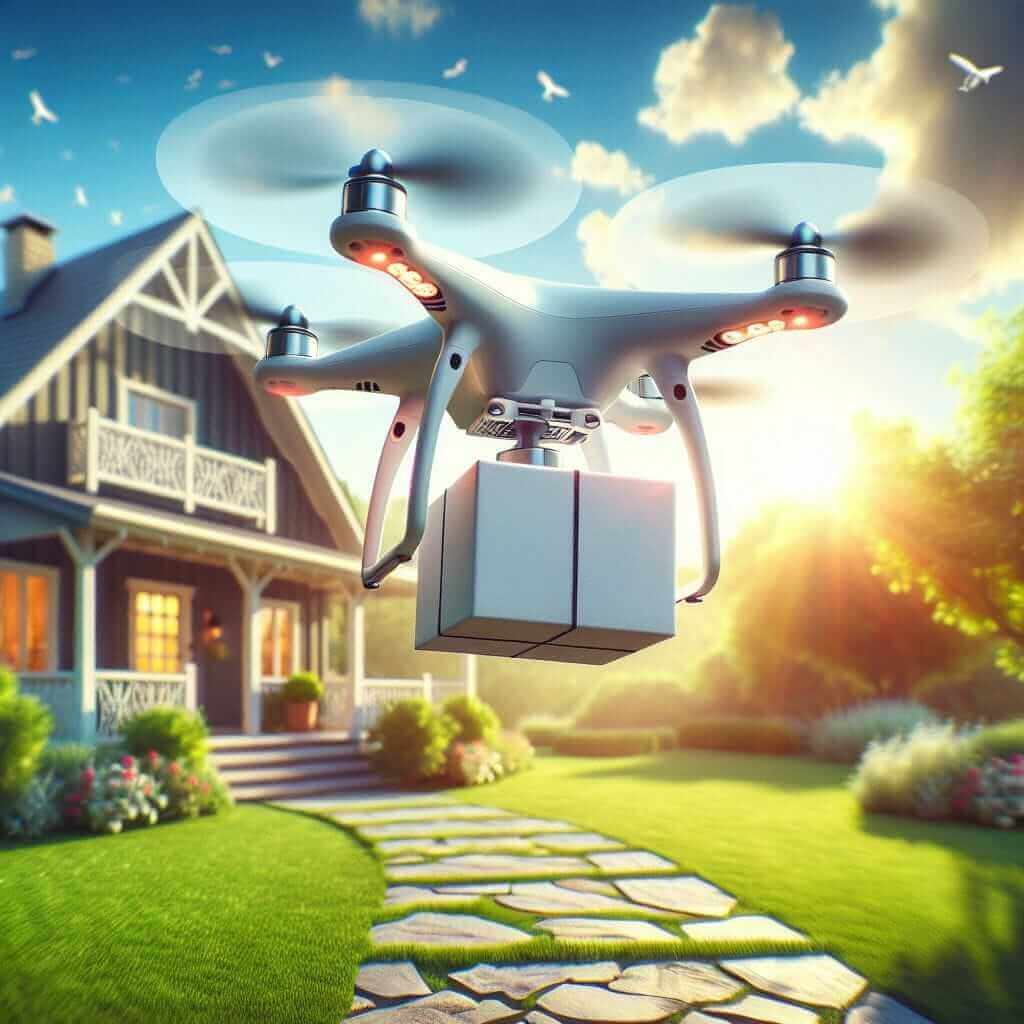The Reading section of the IELTS exam tests your ability to understand and analyse a variety of texts similar to those you may encounter in an academic or professional setting. Topics on automation technology, such as autonomous drones in delivery services, are increasingly relevant and could appear in this section. With the rise of e-commerce and advancements in technology, it is a topic of substantial interest and often discussed in media and academic papers. Based on these trends, the probability of encountering such topics in future IELTS exams is high.
Main Content
Reading Passage
Title: The Implications of Autonomous Drones in Delivery Services
Paragraph 1
Autonomous drones are rapidly becoming a crucial component in the logistics and delivery industry. These unmanned aerial vehicles (UAVs) offer multiple benefits that traditional delivery methods cannot match. For businesses, drones reduce delivery times and operational costs. Additionally, they minimize human labour and the risks associated with manual delivery systems. On the consumer side, drones offer faster and more efficient services, especially in hard-to-reach areas. Despite these advantages, the integration of autonomous drones into delivery services is marred by several challenges and regulatory hurdles.
Paragraph 2
One of the most critical benefits of deploying autonomous drones is the reduction in delivery times. Drones can travel directly to the delivery location, bypassing road traffic and geographic impediments. This direct route capability makes them particularly effective in urban settings and during peak hours when road congestion is a significant issue. Furthermore, drones can deliver packages without human intervention, streamlining the logistics process and cutting down on delivery times significantly.

Paragraph 3
Cost-efficiency is another significant advantage of autonomous drones. With the reduction of human labour and fuel costs, companies can save substantially on operational expenses. This cost reduction is particularly notable in the “last mile” of delivery — the final step in the delivery process, which is often the most expensive and time-consuming. Drones require minimal maintenance and can be deployed on-demand, which further adds to financial efficiency.
Paragraph 4
Despite these advantages, several challenges hinder the widespread adoption of drones in delivery services. Regulatory frameworks across different countries vary significantly, impacting the operational efficiency of drone delivery services. Privacy and security concerns are also prevalent, as drones often carry cameras and tracking equipment. There’s also the issue of weather conditions impacting drone functionality, particularly in areas prone to extreme weather.
Paragraph 5
However, technological advancements continue to mitigate some of these challenges. For instance, newer drone models are equipped with advanced navigation systems capable of safely navigating through populated areas. Anti-collision technologies and robust weather-resistant designs are also being developed to ensure reliability in diverse conditions. Governments and regulatory bodies are gradually drafting standardized guidelines to facilitate smoother integration of drones into commercial activities.
Questions
Based on the passage above, answer the following questions:
Multiple Choice
-
What is the most significant benefit of using autonomous drones in delivery services?
- Reducing human labour
- Cutting operational costs
- Minimizing delivery times
- Mitigating traffic congestion
-
What major challenge is mentioned regarding the deployment of drones?
- Fuel efficiency
- Regulatory frameworks
- Lack of demand
- Insufficient drone supply
True/False/Not Given
-
Autonomous drones can only deliver packages in urban settings.
- True
- False
- Not Given
-
The “last mile” in delivery is the least expensive part of the delivery process.
- True
- False
- Not Given
-
Technological advancements have solved all the challenges associated with drone delivery.
- True
- False
- Not Given
Short Answer Questions
-
Name two significant benefits that autonomous drones provide to businesses mentioned in the text.
-
What is one solution to the regulatory challenges facing autonomous drone delivery?
Answer Keys
Multiple Choice:
- iii. Minimizing delivery times
- ii. Regulatory frameworks
True/False/Not Given:
- False
- False
- False
Short Answer Questions:
- Reduction in delivery times, Cost-efficiency
- Drafting standardized guidelines by governments and regulatory bodies
Common Mistakes in Reading
Many students often struggle with identifying the correct keywords and information in the passage. Precise reading and understanding the question context are essential. Be sure to skim the passage first to understand the structure and then read it in detail while answering the questions.
Vocabulary Highlight
- Operational costs (n): /ˌɒpəˈreɪʃənəl kɒsts/: The expenses related to the day-to-day functioning of a business.
- Logistics (n): /ləʊˈdʒɪstɪks/: The detailed coordination and implementation of complex operations.
- Regulatory (adj): /ˈreɡjələtəri/: Relating to the rules or directives made and maintained by an authority.
- Anti-collision (adj): /ˈænti kəˈlɪʒən/: Preventing or reducing the risk of collisions.
Grammar Insight
Comparative Structures:
- Example: “Drones can travel directly to the delivery location, bypassing road traffic and geographic impediments.”
- Explanation: Comparative structures often use more/less … than or -er adjectives to show differences or improvements.
Conclusion
Preparing for the IELTS Reading section requires a combination of practice, strategy, and focus on various potential topics, including technologically and societally relevant ones like autonomous drones in delivery services. Use the practice passage and questions provided to refine your skills, and remember to pay attention to vocabulary and grammar details.
By regularly engaging with practice passages, familiarizing yourself with different question types, and expanding your vocabulary, you’ll increase your chances of achieving a higher score in the IELTS Reading section.